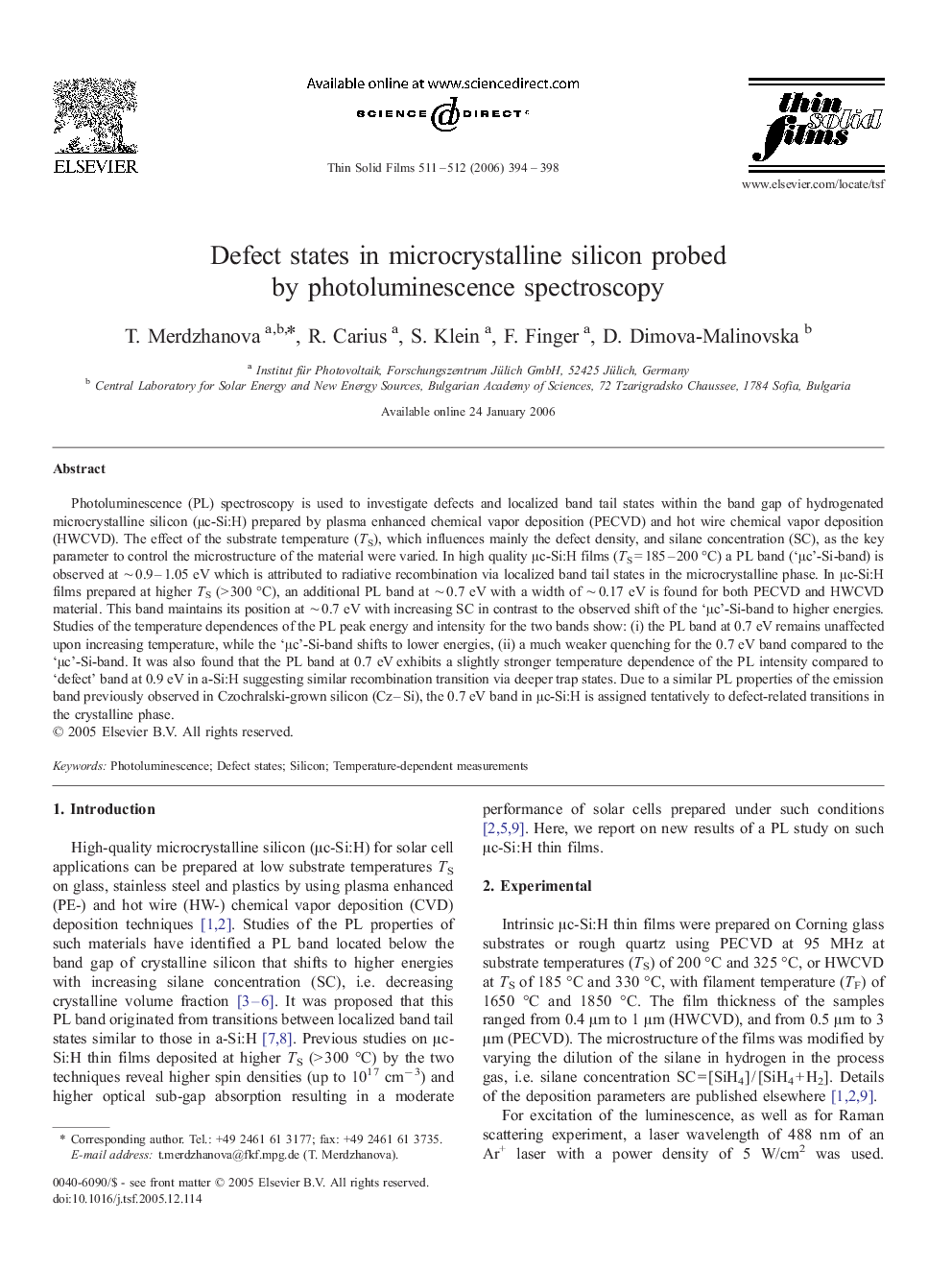| Article ID | Journal | Published Year | Pages | File Type |
|---|---|---|---|---|
| 1673344 | Thin Solid Films | 2006 | 5 Pages |
Abstract
Photoluminescence (PL) spectroscopy is used to investigate defects and localized band tail states within the band gap of hydrogenated microcrystalline silicon (μc-Si:H) prepared by plasma enhanced chemical vapor deposition (PECVD) and hot wire chemical vapor deposition (HWCVD). The effect of the substrate temperature (TS), which influences mainly the defect density, and silane concentration (SC), as the key parameter to control the microstructure of the material were varied. In high quality μc-Si:H films (TS = 185-200 °C) a PL band ('μc'-Si-band) is observed at â¼Â 0.9-1.05 eV which is attributed to radiative recombination via localized band tail states in the microcrystalline phase. In μc-Si:H films prepared at higher TS (> 300 °C), an additional PL band at â¼Â 0.7 eV with a width of â¼Â 0.17 eV is found for both PECVD and HWCVD material. This band maintains its position at â¼Â 0.7 eV with increasing SC in contrast to the observed shift of the 'μc'-Si-band to higher energies. Studies of the temperature dependences of the PL peak energy and intensity for the two bands show: (i) the PL band at 0.7 eV remains unaffected upon increasing temperature, while the 'μc'-Si-band shifts to lower energies, (ii) a much weaker quenching for the 0.7 eV band compared to the 'μc'-Si-band. It was also found that the PL band at 0.7 eV exhibits a slightly stronger temperature dependence of the PL intensity compared to 'defect' band at 0.9 eV in a-Si:H suggesting similar recombination transition via deeper trap states. Due to a similar PL properties of the emission band previously observed in Czochralski-grown silicon (Cz-Si), the 0.7 eV band in μc-Si:H is assigned tentatively to defect-related transitions in the crystalline phase.
Related Topics
Physical Sciences and Engineering
Materials Science
Nanotechnology
Authors
T. Merdzhanova, R. Carius, S. Klein, F. Finger, D. Dimova-Malinovska,
